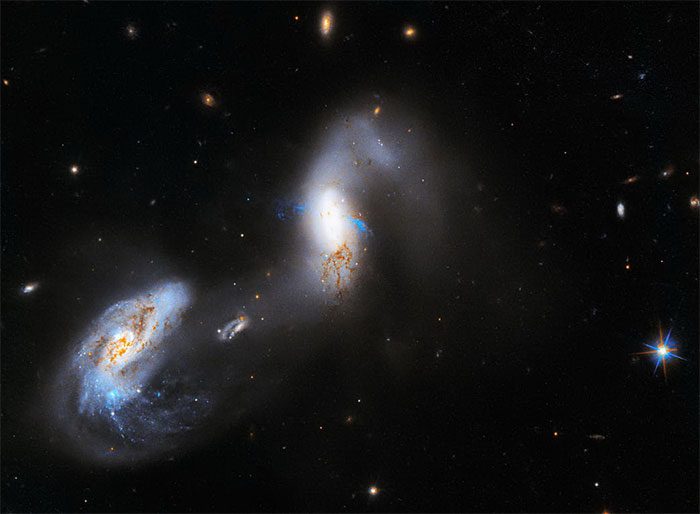The Hubble Space Telescope of the National Aeronautics and Space Administration (NASA) has captured new images of an extremely bright interacting galaxy named AM 1214-255.

New image of galaxy AM 1214-255. (Source: NASA).
According to NASA, these galaxies contain active galactic nuclei (AGN) – an extremely bright central region of a galaxy. This is the dense core of a galaxy, created by the accumulation process of a supermassive black hole at its center.
Nasa notes that this dense AGN core is surrounded by gas and dust, spiraling around as it falls into the black hole, causing frictional forces.
The process generates immense radiation, making AGNs the strongest radiation sources in the universe, with brightness equivalent to that of billions of stars emitted from an area no larger than our Solar System.
Hubble has observed galaxies closest to the center as part of an AGN survey, aimed at compiling a dataset on AGNs to serve as a resource for astronomers studying AGN physics, black holes, galactic structures, and more…


















































